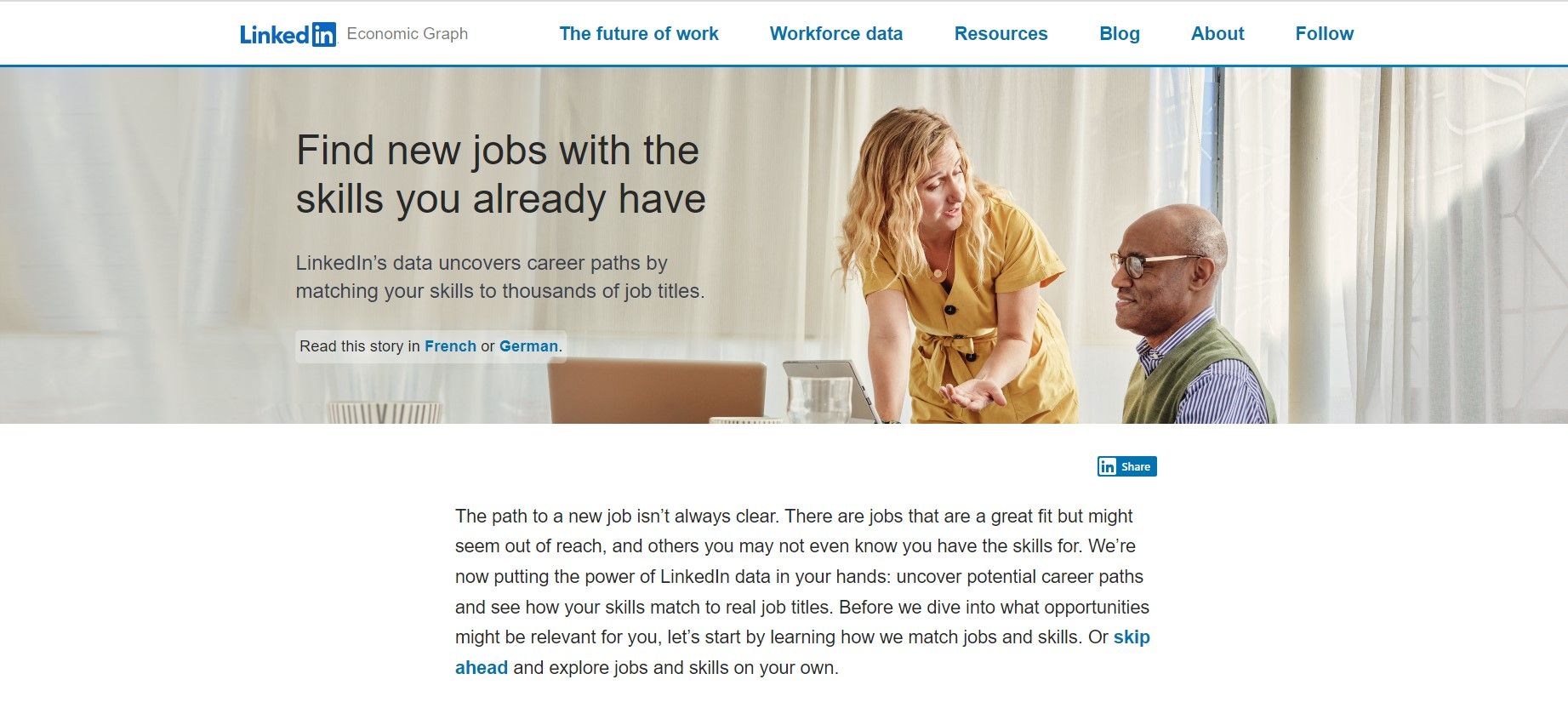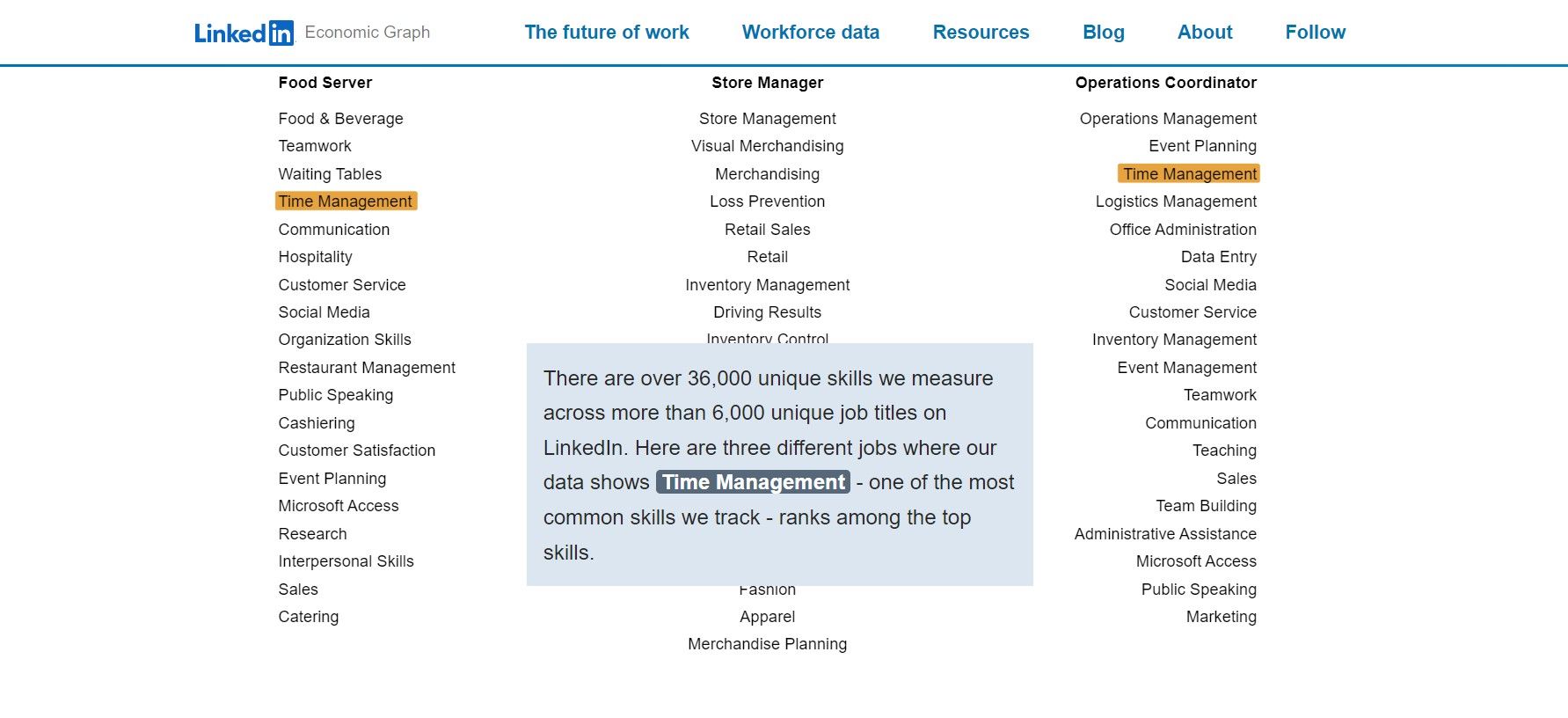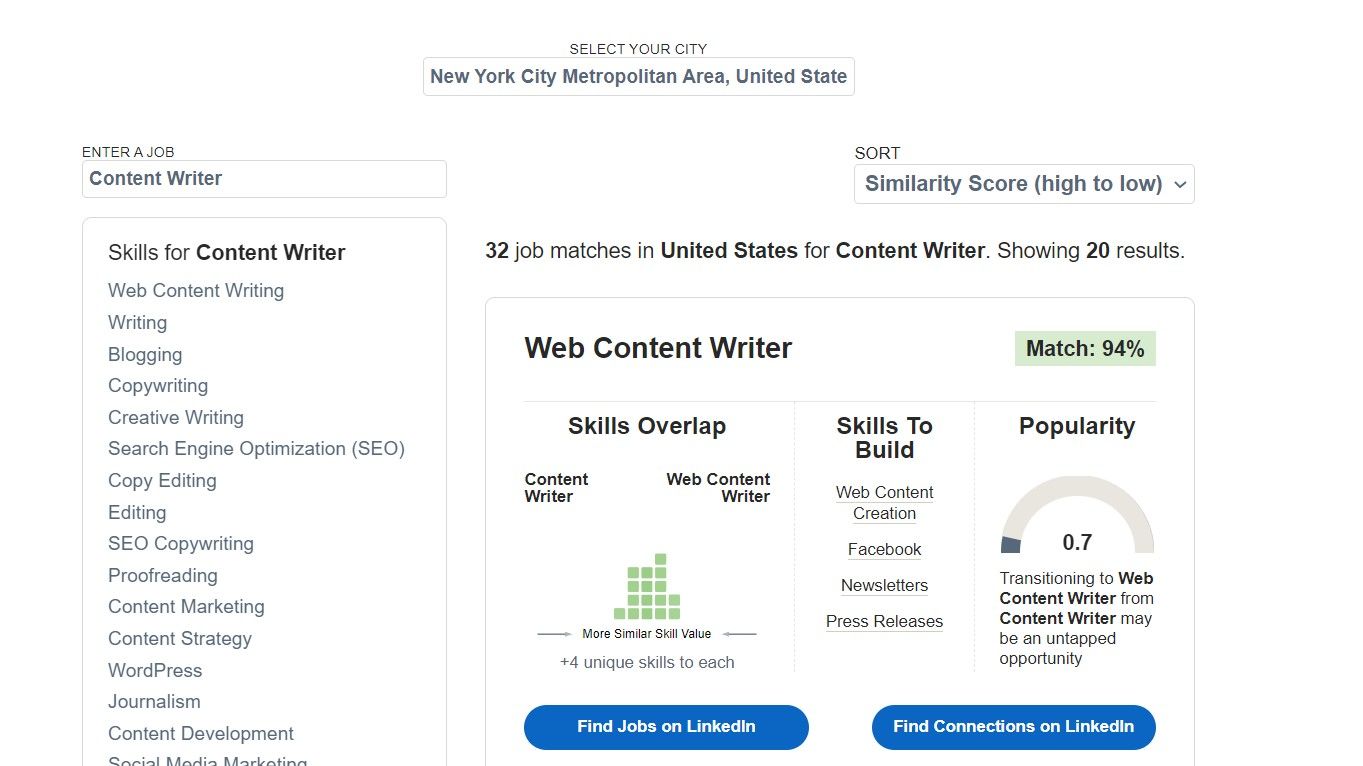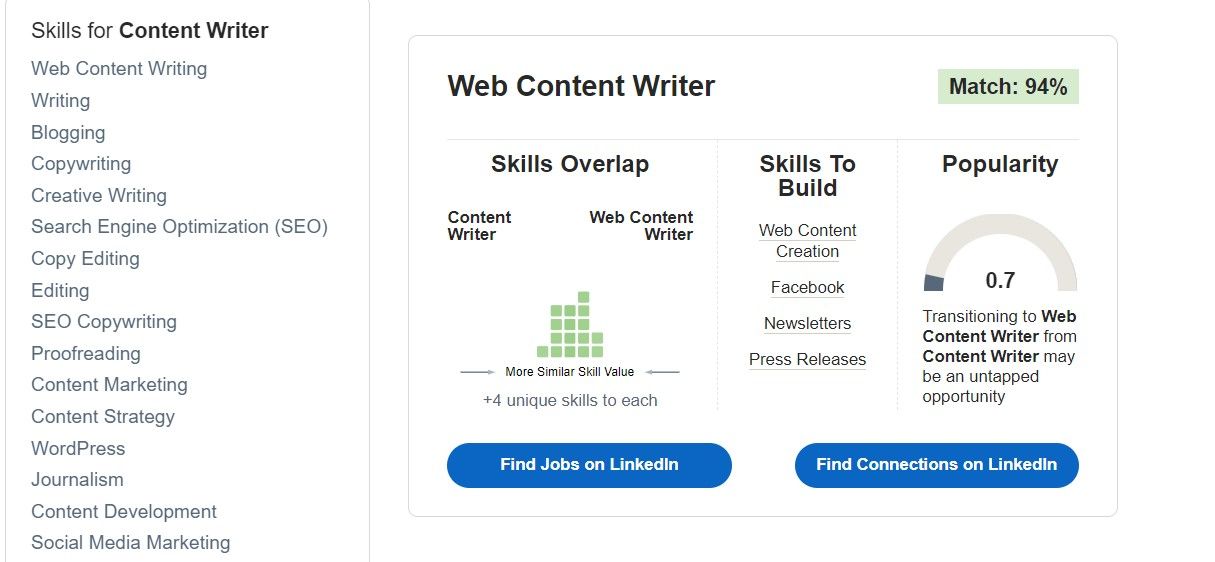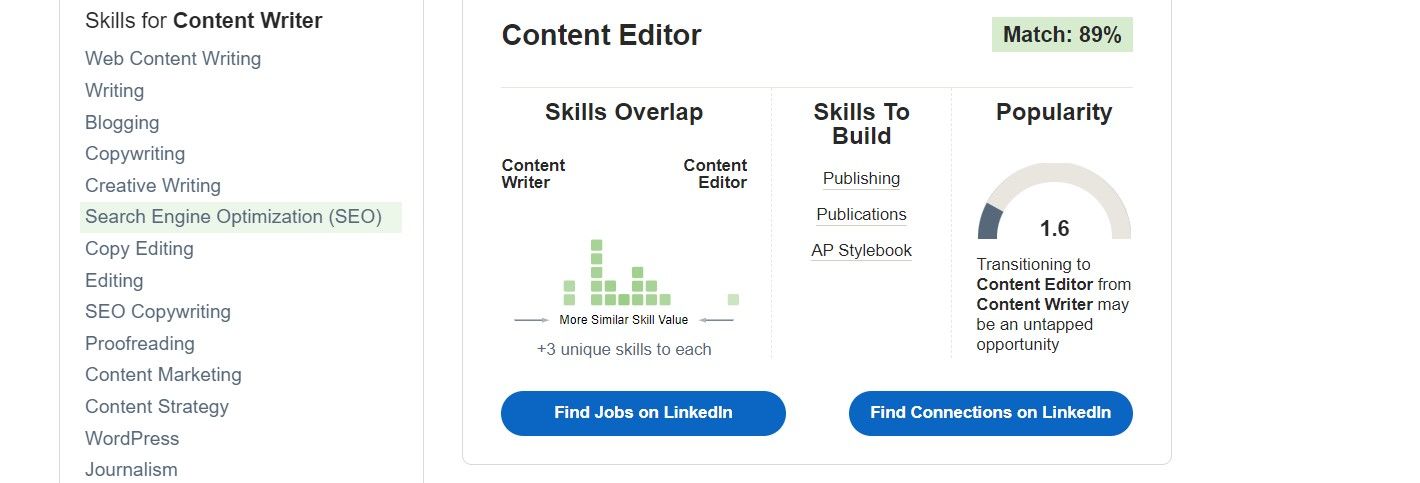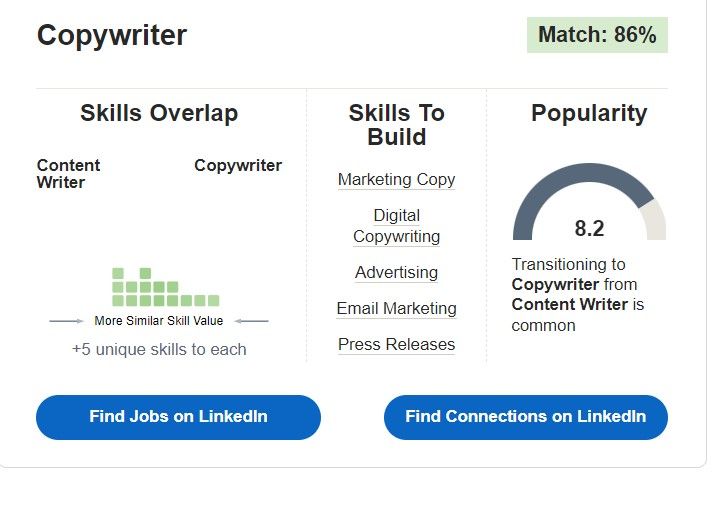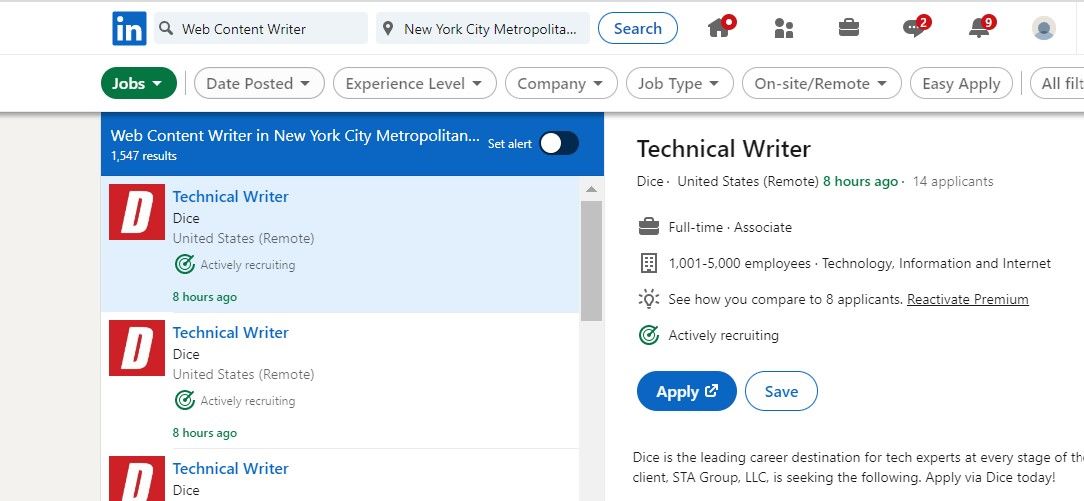How to Use LinkedIn Career Explorer to Assess Your Career Path
Whether you’re just starting out or a professional with years of experience looking for a transition, LinkedIn Career Explorer can help.
With LinkedIn Career Explorer, you can assess your current career path and find new potential career paths that work best for you. In this article, we will guide you through the platform to use it efficiently and discover potential career opportunities for you.
Why should you use LinkedIn Career Explorer?
LinkedIn Career Explorer is a useful free tool from LinkedIn that helps job seekers explore their existing and new job roles for career advancement. The tool uses real-time LinkedIn data to present you with the most relevant opportunities based on the job role and location you enter.
Based on similarity in skills and popularity, LinkedIn Career Explorer compares the job role you enter to those of similar roles. Based on the results, you can choose the career that best fits your current professional role skills.
It also gives you insight into what skills you need to develop to make a successful career change. In addition, the tool allows you to find jobs in the same industry and connections to build your network.
How to use LinkedIn Career Explorer
To get the most out of LinkedIn Career Explorer, you need to understand how to use it to find the best career opportunities. Here are the steps to help you get started with the platform:
1. Go to LinkedIn Career Explorer
You don’t need to register or log into your LinkedIn account to access this tool. The tool is hosted on GitHub and you can access it simply by going to LinkedIn Career Explorer. You will find a brief overview of the tool and how it fits with the jobs and skills showing your results when you enter the site.
2. Select your location and job
After you become familiar with the tool, you can scroll down to enter your existing job role and the city where you are looking for a job. If you are a beginner, you can enter your desired job role. Once you have filled these two fields, the results will be displayed on the platform.
You will see multiple job matches compared to the job role you entered based on similarity and popularity score. For example, the job entered here is Content Writer – and the roles you see relate to the description.
3. Sort your results by similarity or popularity
You can sort the job matches shown in your results by similarity or popularity. Tap on sort by to select your preferred choice from the drop down list.
sort by similarity factor displays jobs that match similar skills to the job role you entered. On the other hand, by sorting by popularity score, see job matches, showing how often people move from the role you entered into that job role. You will see a scale from one to 10; The higher the score, the more likely people are to switch to that role.
Additionally, if the Similarity Score for the matching job role is higher and the Popularity Score is lower, it indicates an unexplored career path that could be a great opportunity for you with less competition.
4. Analyze your result diagram
After you’ve chosen your preferred options for viewing your results, you can analyze your results graph to see how the job matches compare to the job role you’re looking for.
Explore the skills to find the similarity match
You can see that a similarity score is displayed Fit: at each job match on the upper right side of the result. The higher the score, the more overlapping skills the job has in common with the job entered. Also, you can tap and analyze each skill on the left. These essential skills are filled according to the job role and the matches found.
Look for skills that overlap and the skills to build section on the chart
Seek skills overlap to find the skills that match both job roles. The skills at the center of the two job roles are closest to them. On the other hand, some abilities are off center and shown closer to the specific role of the two. These skills are the ones that the jobs don’t have in common.
For example, comparing content writer and content editor reveals common skills like content development and web content writing. While skills like SEO and content marketing only apply to the content writer job role, skills like content management are more relevant to the content editor role.
Also, you can check the skills to build section next to it skills overlap to know which ones to develop to transition into the role. By selecting the skills you will be forwarded to the courses on the LinkedIn Learning Platform, where you can learn and deepen the skills.
Analyze the popularity value for each job result
Next, analyze the popularity score for each job result. As mentioned earlier, the popularity score shows how often people have switched to the professional role. While a higher popularity score may also mean the most common or easiest career choice to move into, a lower popularity score with a higher similarity match indicates an untapped career opportunity worth exploring.
For example, with a popularity score of 8.2, moving from content writer to copywriter in New York City is more common than moving from content writer to content manager—which has a score of 4.1.
5. Find jobs and contacts on LinkedIn
Next, after analyzing your results, the tool allows you to find jobs on the LinkedIn platform in the job match you want to apply for. Tap on find jobs and it will show you all the jobs based on the location you entered. You can also choose and apply the one according to your preference. You can also learn to use free LinkedIn features to improve your job search before applying for the positions.
Additionally, LinkedIn Career Explorer will help you find the best connections in this space to build your network and expand your reach on LinkedIn. You can tap find connections to start.
Find your best career path with LinkedIn Career Explorer
With the above steps, you can use LinkedIn Career Explorer effectively and explore potential career opportunities. Analyze each job match to find the most suitable role to start your career or transition to career advancement.
